
Over the years I have gathered many comforting items in my studio. I thought I would take the next few weeks and talk about my many “friends of the studio”
If you have been following my blogs, you already know of my love for my good friend, aluminum foil.
Read “An Ode to Aluminum Foil” here >
This week I want to show my uses for “bridges”. When I was a young illustrator, we often worked on a flat table or a tilted drafting table and so it was beat into my head to use a “bridge” like below to protect the work especially since the work was probably being done in markers or wet paint. We did all artwork by hand in the 80’s and 90’s! Shocking, I know…..
Why a bridge….?
Some bridges are very shallow, so you can rest your hand on the edge of the bridge to have a steady hand while drawing detailed work. Even a piece of paper carefully laid over a drawing can serve as a bridge. If I am starting a detailed drawing, (And I don’t always do that) I will start at my drafting table and plan the drawing out very carefully before moving the painting to my easel to work on it standing up with more energetic motions and larger sticks. I find doing an entire painting with detailed strokes can kill the life of a painting. Better to get a rough plan and then move it to the easel where it can come to life.
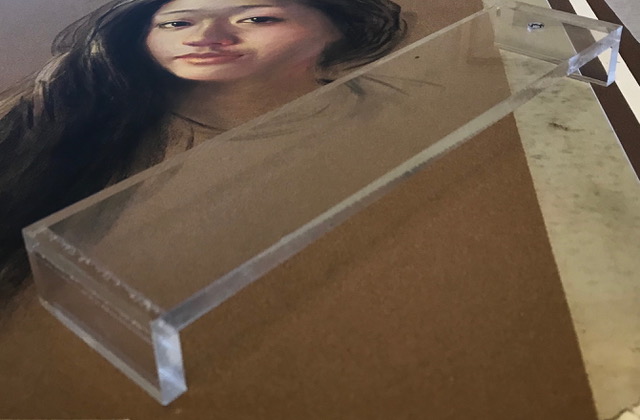
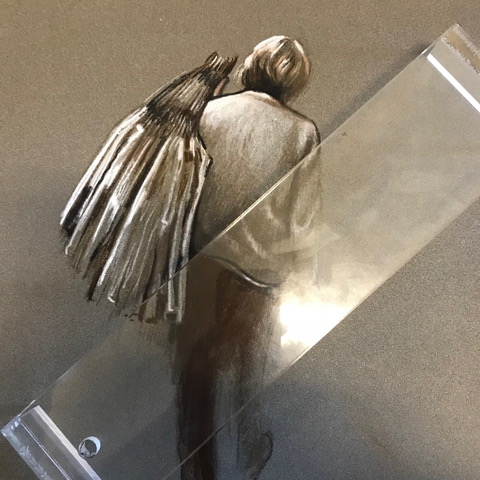
This clear little guy here has been my fav for a long time. I think I bought him 25 years ago. I like him because he is clear- I can see through the bridge and carefully put his “feet” down on an area of the painting where he won’t damage anything. Truly, if I am worried about smudging or ruining the drawing at this stage, then I am getting too fussy too soon. I can always correct things or strengthen an area later. Who needs stress at this point?
Another type of “bridge” is what is called a “mahl stick”. I am always amazed when I teach a workshop and artists start asking “What is that thing?” This thing is my BFF!!!!
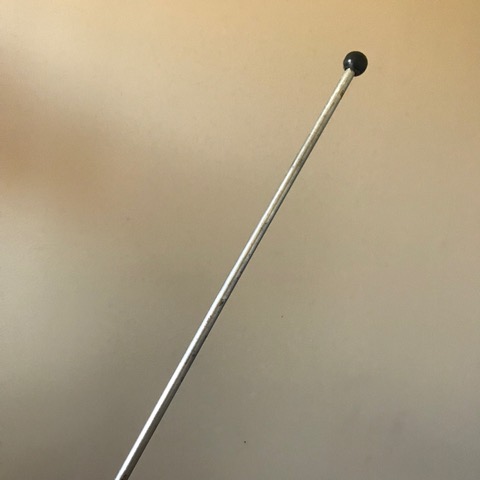
Oil painters use mahl sticks that look more like below… typically with a soft end They hook it on top of the painting or set it right on the work so their hand can have a “rest” and not touch wet paint.
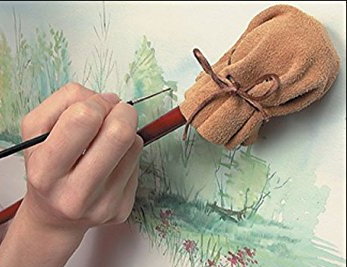
And it is good to note that anything straight can serve as a mahl stick. I have used yardsticks in a pinch.
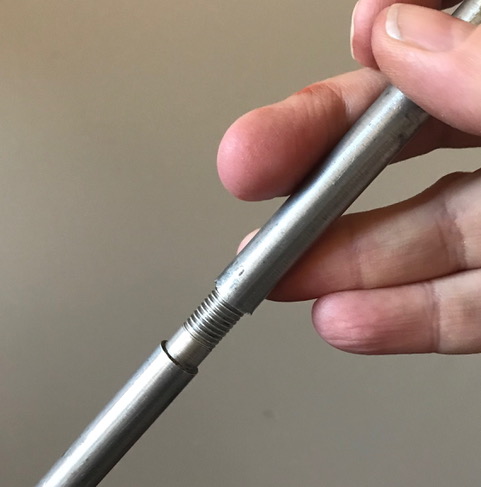
This is my best friend…. he is tiny and has a small rubber ball on the end. It comes apart into 3 pieces although now there is a missing piece in the one end since my son decided one day that this made for a great pretend sword and broke off a piece of the metal near the threads. (above) I was so happy it still worked and the threads still hold. I treat him with care now. (and hide him from children) This is how I use him….
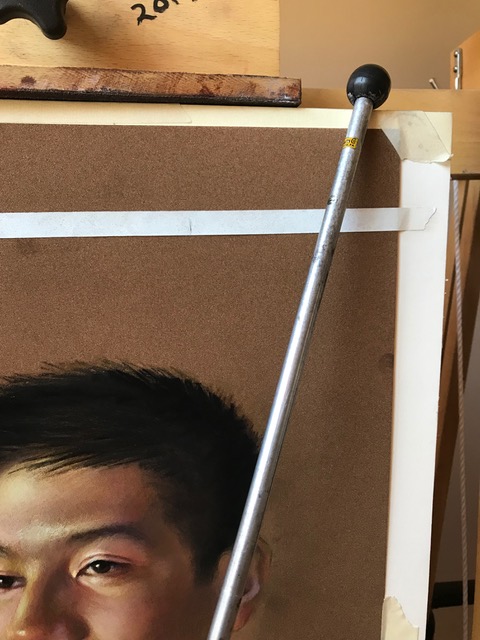
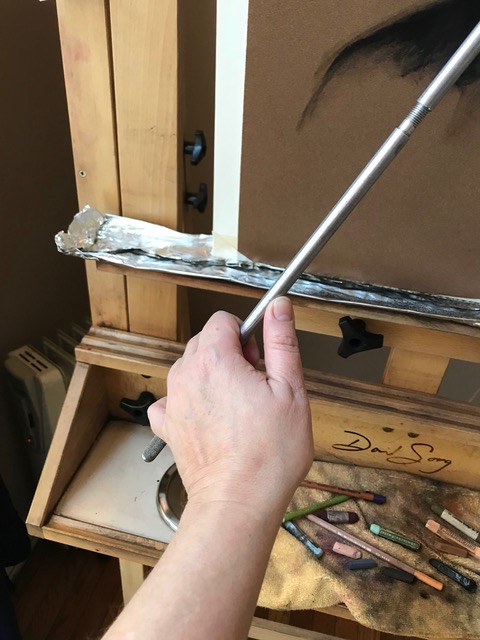
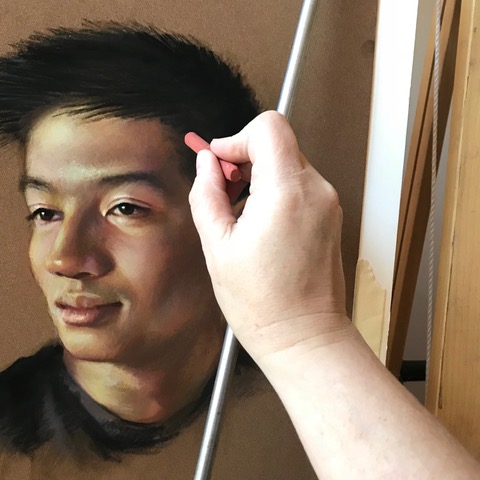
ok, time for the story of how I got this guy….
Many years ago my parents used to go to auctions for fun. (I privately think they were impressed with the auctioneers who could talk so fast) Anyway, one day they bid on and won an auction box that had its contents listed as “art supplies”. They gave me the box and we went through it. It was filled with true artists’ treasures…. half-used oil and acrylic paints, a brush cleaner tub, erasers, pencils, all kinds of knick-knacks and I used some of those things for many years. But the best item was this almost-overlooked mahl stick. There was a name on the box and on a few of the things in the box and for many years I wondered to who the previous owner had been. One day I met another artist who was talking about a great teacher he had had at the Art Institute of Pittsburgh who had passed away. He said his name and it rang a bell. Then it hit me- I had his art supplies! At the time I was too embarraassed to share that I had his art things including my beloved tiny mahl stick. I am not sure why. May be it felt a little bit like being a grave robber. But the more I thought about it, the more I have come to think that although I never met him, I think he is happy that his mahl stick has brought another artist much joy and help.
So, if you are trying to get a little steady detail added into a painting, try a bridge. I have found that I have better results standing at my easel and adding a mark by being very deliberate and being able to steady my hand rather than sitting and putting in hesitant strokes with a very sharpened pastel pencil. (yuk to trying to keep pastel pencils very sharp!) Those marks tend to look so “pinched.”
I like standing and brandishing a “sword”– like the warriors we are …

I always enjoy your blog posts. My “mahl stick” is a slightly bent, over sized screw driver. Just about 24 inches. I wouldn’t trade it for anything. My youngest son gave it to me years ago.
perfect! that is all you need!
thank you for the amazing insight i never really started too appreciate fine art i’ v e had no classes i picked up a pencil and i learned about light i see now why i really should have paid more attention too the details because in a few short minutes i see more than ever how too appreciate the craft that you see and recreated so flawlessly i try but i get confused sometime and the details seem too confuse me sometime thank you for your advice
sure thing! just keep painting! 🙂
Loved this article!!
🙂
I have a bridge (fiberglass or light metal of some sort) attached to a sliding metal piece on the top of my easel. The bottom hangs freely over the painting so that I can push it out of the way or move it up and use it at any angle over the painting. I love it and use it all the time. It also detaches but I have not yet had a reason to do so.
awesome!